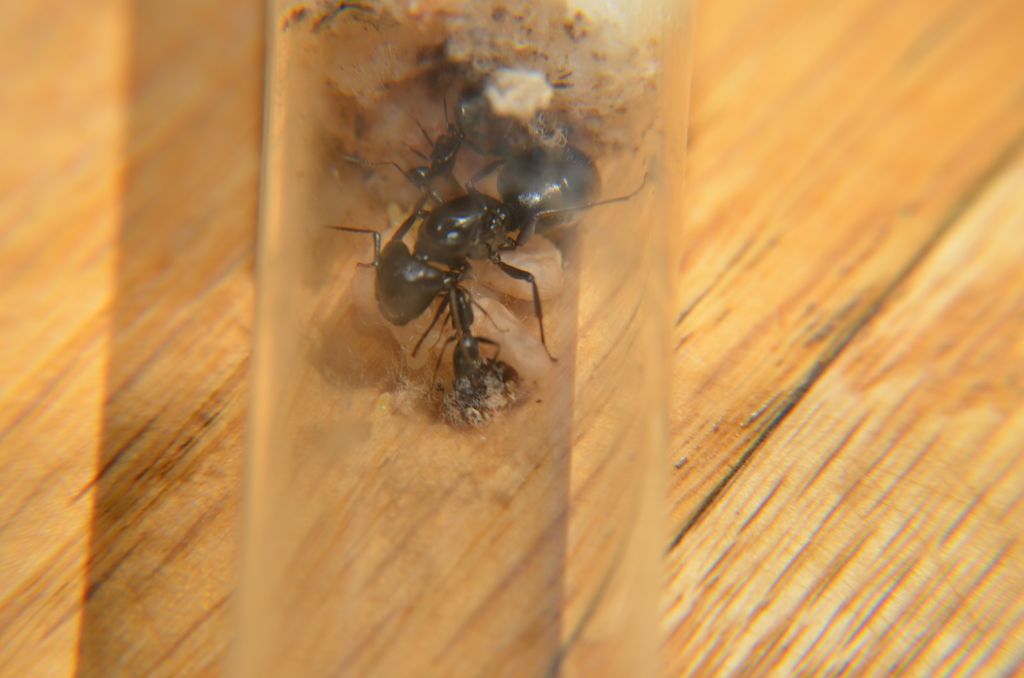One week ago I found this queen under a box in Sioux Falls, SD.

Here you can clearly see she has five eggs

I found this queen in the Split Rock Creek State Park in Ihllen, MN
http://tinypic.com/u...Xwo/4h4l5k2TGxc
She has 2 larvae that are pupating as I speak, and 1 other larvae, along with 3 recently laid eggs

I found this colony In Split Rock as well. I couldn't get all of the workers, however I got most of them
This colony has 6 workers, 1 recently eclosed pupae, 4 larvae, and 6 recently laid eggs.

This queen was found in Palisades State Park

She doesn't have any brood yet, but was found inside her founding chamber, so I believe she is fertile.


This colony was found in Palisades as well.

They have 3 workers, 1 pupae, one large larvae, and 3 recently laid eggs.

This poor worker only has one antennae...
http://tinypic.com/u...xc#.Vq69ZfkrLIU
The queens/colonies found in Split Rock Creek Palisades where found 3 days ago. I ordered a large inception chamber from THA, and I think I will put the largest colony in there until I get my hands on something else. So far everybody accepted meal worms and honey. I have high hopes for them.
Edit: Ugh, my pictures aren't loading... Hold on for a sec guys...
Edit: Ok, fixed up.
Edited by Ants4fun, January 31 2016 - 6:05 PM.











































